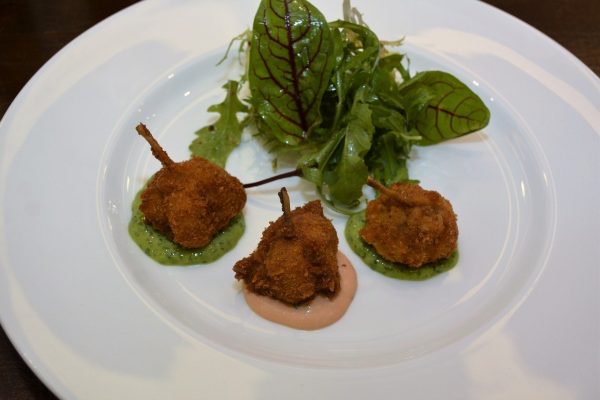Food tells a lot about the country where it’s consumed, so if anyone wants to see a country without visiting it they should try national dishes. Exotic foods are not used in day-to-day dishes and these treats can burn a hole in one’s pocket. Truly exotic dishes are rare outside of their homeland and require unique techniques to be prepared.
Hakarl
This national dish of Iceland is made of fermented shark meat and has a wretched smell that is reminiscent of rotten cheese mixed with ammonia and strong, numbing flavors. Someone trying this out for the first time is advised to pinch their nose and if he or she survives gag-inducing smell they may feel brave enough to sample this fermented shark flesh.
Fresh meat is never used for mentioned dish because it contains a high percentage of urea and trimethylamine oxide making it poisonous. People who are sensitive to strong smell are more likely to dislike the shark but those who are fans of strong cheese and don’t mind the smell will enjoy this exotic dish.

Stuffed camel
This delicacy is mentioned in Guinness Book of Records as one of the largest single menu dish offered in the world. Stuffed camel is traditional Arab wedding dish for elite families.
The dish consists of whole camel, 2 – 4 lambs (it depends on size of lamb), 20 roasted chickens, 60 boiled eggs, 40 kilos tomatoes, 12 kilos rice, pine nuts, almonds, pistachio nuts, and black pepper. The entire process of cooking takes around 24 hours.
Frog legs
They are one of the best selling delicacies and one of common exotic dishes in the world. Frog legs are often said to taste like chicken wings because of similar texture and mild flavor. The treat is a risky dish because most frogs are poisonous and some of them can be confused with edible ones.
The treat is especially popular in France and China and several other countries like India, Vietnam, and Thailand consume it as well. Frog legs are also main ingredient of soup called Kodok Oh that is popular in Indonesia.

The Densuke Watermelon
This fruit is considered to be the most expensive watermelon in the world (prices range from 250 USD to 6000 USD). Densuke watermelons are grown on Japanese island of Hokkaido and every year there are about less than a hundred, so the fruit is very rare and the list of people who have tasted one is quite small.
Densuke watermelon is characterized by much higher level of sweetness and it almost has no seeds in comparison to ordinary watermelon. Its skin has a very dark shade of green to appear sometimes black and shiny.
Edible gold
Those people who adore gold and own gold jewelry as a status symbol will certainly like edible version of this precious metal. Mentioned gold is nontoxic, flavorless as well as odorless and can be used as a garnish to drinks, desserts, and other dishes. It adds literally nothing to the dish besides shininess.
Edible gold is available in several forms and can be made of pure gold or a mix of edible metals. It is widely used in gastronomical trend towards extravagant and rich meals.


E aí, pessoal! Andei vendo uns anúncios da 366bet por aí… Alguém já usou? O que acharam? Tô curioso pra saber se vale a pena!
It’s fascinating how easily we fall for sunk cost fallacy – staying in losing streaks! Seeing tools like the GPT-4o Image Converter democratize content creation is wild; accessibility really changes the game. Makes visualizing ideas so much faster!
Exploring AI tools can be overwhelming, but platforms like tyy.AI simplify the process. Their curated list, including the AI Twitter Assistant, saves time and boosts productivity for professionals and entrepreneurs alike.
Keno’s randomness is fascinating, but strategy can help manage risk! Seeing platforms like jl boss casino integrate secure banking (GCash, PayMaya!) is a big plus for accessibility & peace of mind while enjoying those slots.
Okay, 747livevalorant… I was kinda skeptical, but jumped in for a quick game. Had a blast, ngl. Feels responsive. If you’re a Valorant fiend, give it a spin: 747livevalorant